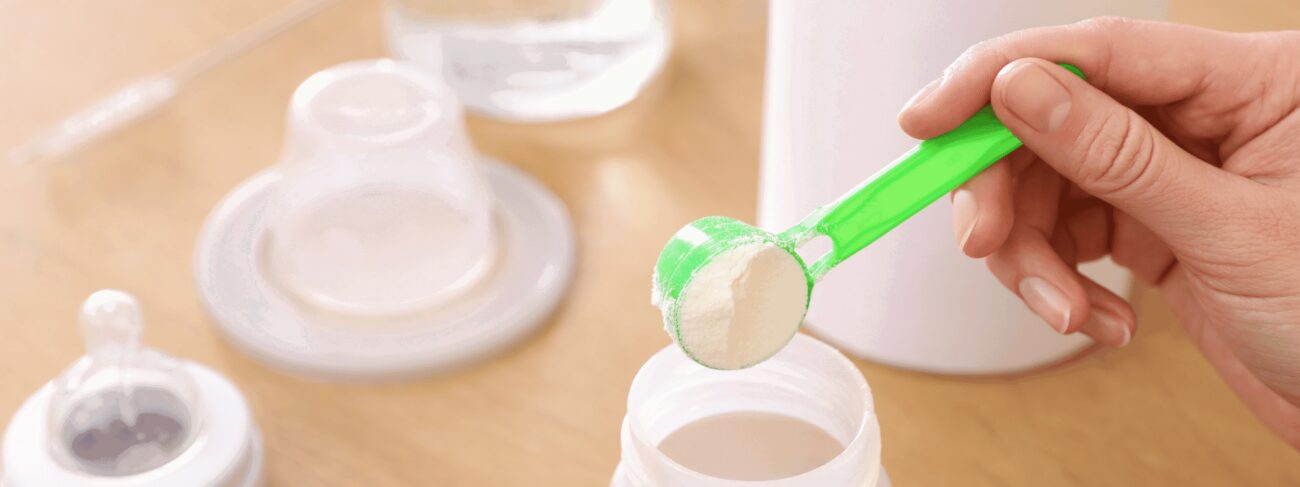

Kate Geagan, M.S., R.D.N.
Dietitian and sustainable nutrition pioneer
How to prepare your baby's formula: Everything you need to know
Hooray! You (and your pediatrician) have settled on which formula best fits your little one’s needs. Whether you are choosing powdered, ready to use or concentrate, your baby’s formula will come with specific preparation instructions that serve as a great starting point. This article will share additional helpful pointers, including:
- Bottle Basics: How do I safely prepare my baby’s formula?
- How long can I store formula?
- What about traveling?
How Do I Safely Prepare My Baby’s Formula?
- Check expiration dates. Always use formula by the “use by” or expiration date printed on the container and never use expired formula. Once a container is opened, store in a cool, dry place-do not store in the refrigerator. Many formulas need to be used within 30 days after the canister is opened to ensure all the nutritional goodness is in its peak form. To help remember (with all those sleepless nights!) it can be helpful to write the date on the lid when opened.
- Start squeaky clean! Sterilize all new bottles, nipples, rings and caps before the first use by gently boiling the equipment in water for 5 minutes (or using a stand-alone steam sterilizer). Always prepare formula on a clean surface. To help keep your baby safe from any harmful bacteria, wash hands, and use clean bottles, liners and nipples that have been washed thoroughly in hot soapy water (bottle brushes can come in handy, too!).
- Prepare formula according to directions. Formula is carefully designed to deliver nutrition similar to breast milk and is closely regulated by the FDA. To ensure your baby receives all the healthy nourishment they need, always follow the packaging instructions closely and prepare the formula using the exact water-to-powder ratio directed. Different brands may require a different number of scoops per ounce of water, so this is an important step!
How Long Can I Safely Store Formula?
Federal guidelines recommend a “use quickly or store safely” strategy, which means the following:
- You can prepare up to 24 hours’ worth of formula ahead of time; prepare in individual bottles, cover and refrigerate immediately. Be sure to throw away any unused formula after 24 hours.
- Use prepared infant formula within 2 hours of preparing the bottle, and within 1 hour from when feeding begins as bacteria from your baby’s mouth can make it unsafe to consume.
- Discard any formula that is left in the bottle after feeding your baby-as the combination of formula and baby’s saliva can cause bacteria to grow.
Reference: CDC
How Do I Keep Formula Safe When Traveling?
Whether you’re heading for a visit to relatives, or providing for daycare, keep formula safe for your baby with these tips:
- For quick trips without refrigeration (less than 2 hours until feeding) pack prepared bottles and use immediately on arrival.
- For long trips (around 2 hours or longer), keep prepared formula bottles packed in a cooler bag with ice packs.
- For even longer trips, consider bringing formula and water separately. For convenience, you can pre-measure formula and store it in a clean, sanitized container or formula dispenser. Pre-measure water in the bottle…. and you’re ready for when you arrive!
And remember that once your baby has begun the bottle, any unused formula needs to be thrown out after 1 hour.
Reference: WHO
Additional Helpful tips:
- Always start with water first in the bottle, then add the formula.
- Clean tap water is safe for most babies. Talk with your pediatrician if you have any concerns.
- Always use the scoop provided in the formula container (as sometimes scoop sizes change). Add a level scoop (not too high, not too low); gently tap the side of the container or use a clean utensil to level off the scoop.
- It’s ok to give your baby room temperature or even cool formula. If your little one prefers a gently warmed bottle, you can also gently warm it by placing the prepared bottle in a bowl of warm water or running it under warm water (never warm bottles in the microwave, as this can create uneven hotspots). Check the temperature by putting a few drops on your wrist or the back of your hand.
This is for informational purposes only and should not be treated as medical advice. The content is not intended to be a substitute for professional medical advice, diagnosis, or treatment. Please always discuss any health and feeding concerns directly with your pediatrician. Never disregard professional medical advice or delay in seeking it because of something you have read above.

